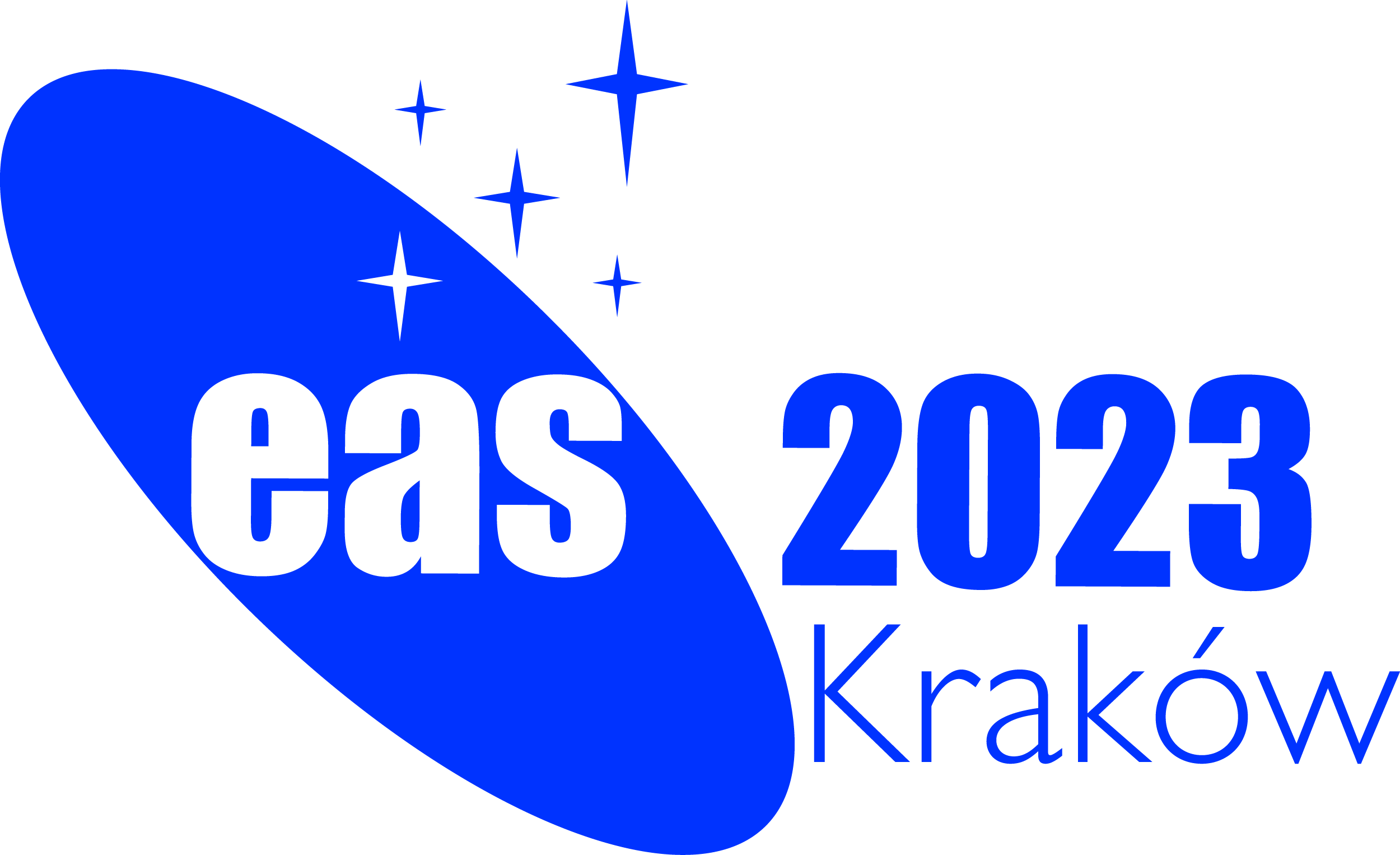Symposium S13
12-13 July 2023
Stars, magnetic activity, and circumstellar environments - confronting simulations and observations
Aims and scope
The meeting will be structured in two parts, one focusing on
"Stellar dynamos from solar-like stars to ultracool dwarfs – how does magnetism affect the star's environment?":
The magnetic activity of the Sun and other stars depends on the operation of a dynamo in the interior and has various manifestations, observable throughout the electromagnetic spectrum – from activity cycles, starspots and winds, to stellar transients such as flares and coronal mass ejections. This symposium intends to bring together experts on theory and observation of solar and stellar magnetism, and exoplanetary science to discuss the recent advancements of the different fields and to answer questions such as i) what are the dynamo observables and what observing strategies are needed to improve the studies of stellar dynamos in different stages of stellar evolution; ii) how do the dynamos operate in single stars and in close binary systems; iii) how does the stellar magnetism affect the nearby exoplanet(s); iv) what are the basic conditions for habitability in terms of magnetism. Our goal is therefore to create an atmosphere of lively discourse for a better understanding of the magnetic dynamo which may have been a prerequisite for the appearance of life on Earth as well.
The second part will focus on
"Discs, winds, bubbles: computational astrophysics of the circumstellar medium":
With the advent of ever more powerful observatories such as ALMA and JWST we are increasingly able to confront the various simulations of the circumstellar medium with spatially and spectrally resolved observations. Some of the examples are hydrodynamic simulations of warped discs around multiple star systems or of flybys, explaining observations of complex accretion disc structure. Stellar outflows pose a similarly interesting problem to computational astrophysics including magnetic fields, clumping effects, interaction of winds and XUV radiation with exoplanets. The comparison of simulations with observations is key to understanding many strongly non-linear systems containing such dynamically unstable flows around stars not only in their formation epoch but also in the late stages of stellar evolution and the remnants of supernovae, as well as their effect on the wider galaxy. The details of thermal and non-thermal radiation from these objects can only be obtained from high-fidelity simulations.
The main goals of this part of the session are to gather the latest developments on modeling circumstellar medium and discuss challenges related to multidimensional (magneto-) hydrodynamical simulation approaches to these problems.
Programme
Here is a broad list of topics that will be covered during the symposium.
Part 1:
- Stellar dynamos and their observable properties
- Stellar transients and their effects on habitability
- Star–planet interactions
Part 2:
- Disc and planet formation:
- formation and evolution of the circumstellar disc
- formation of the gaps, ring features from the disc
- warping and spiral arms from flybys and misaligned companions
- Stellar winds and bubbles:
- magnetised stellar winds
- winds from high- and low mass stars
- role of high-energy stellar radiation
- bubbles - formation, evolution
- energy released to the ISM
- Common envelopes and binary evolution:
- simulations of common envelope evolution in a binary and a multiple systems
- remnant compact objects and their binary orbits
- post-AGB circumbinary disc
Invited speakers
Part 1:
- Maarit Korpi-Lagg (Aalto University, Finland)
- A. F. Lanza (Italian National Institute for Astrophysics, Italy)
- Katja Poppehaeger (Leibniz Institute for Astrophysics (AIP), Germany)
Part 2:
- Cathie Clarke (University of Cambridge, UK)
- Jon Sundqvist (KU Leuven, Belgium)
- Friedrich Roepke (Heidelberg Institute for Theoretical Studies, Germany)
Scientific organisers
Katarzyna Nowak (University of Hertfordshire, UK), chair
Krisztián Vida (Konkoly Observatory, Hungary), chair
Antoaneta Antonova (Institute of Astronomy and NAO, Bulgarian Academy of Sciences, Sofia, Bulgaria), co-chair
Nicolas Cuello (IPAG, France)
Florian Driessen (Leiden Observatory, Netherlands)
Cornelis Dullemond (Heidelberg University, Germany)
Rim Fares (Physics Department, United Arab Emirates University, Al-Ain, United Arab Emirates)
Antonio Frasca (INAF-Osservatorio Astrofisico di Catania, Catania, Italy)
Thomas Hackman (Department of Physics, University of Helsinki, Finland)
Heidi Korhonen (European Southern Observatory (ESO), Santiago, Chile), co-chair
Zsolt Kovári (Konkoly Observatory, Hungary)
Martin Krause (University of Hertfordshire, UK), co-chair
Jonathan Mackey (DIAS, Ireland)
Kosuke Namekata (NAOJ, NINS, Osawa, Mitaka, Tokyo 181-8588, Japan)
Rebecca Nealon (University of Warwick, UK)
Petra Odert (Institute of Physics/IGAM, University of Graz, Graz, Austria)
Contact
Krisztián Vida (1st part of the meeting): vidakris @ konkoly.hu
Katarzyna Nowak (2nd part of the meeting): k.nowak @ herts.ac.uk
Updated on Mon Feb 27 10:30:33 CET 2023
|

 A power cut will shut down all EAS services on Tuesday, 10 January 2017 starting at 7:30 CET.
A power cut will shut down all EAS services on Tuesday, 10 January 2017 starting at 7:30 CET.


